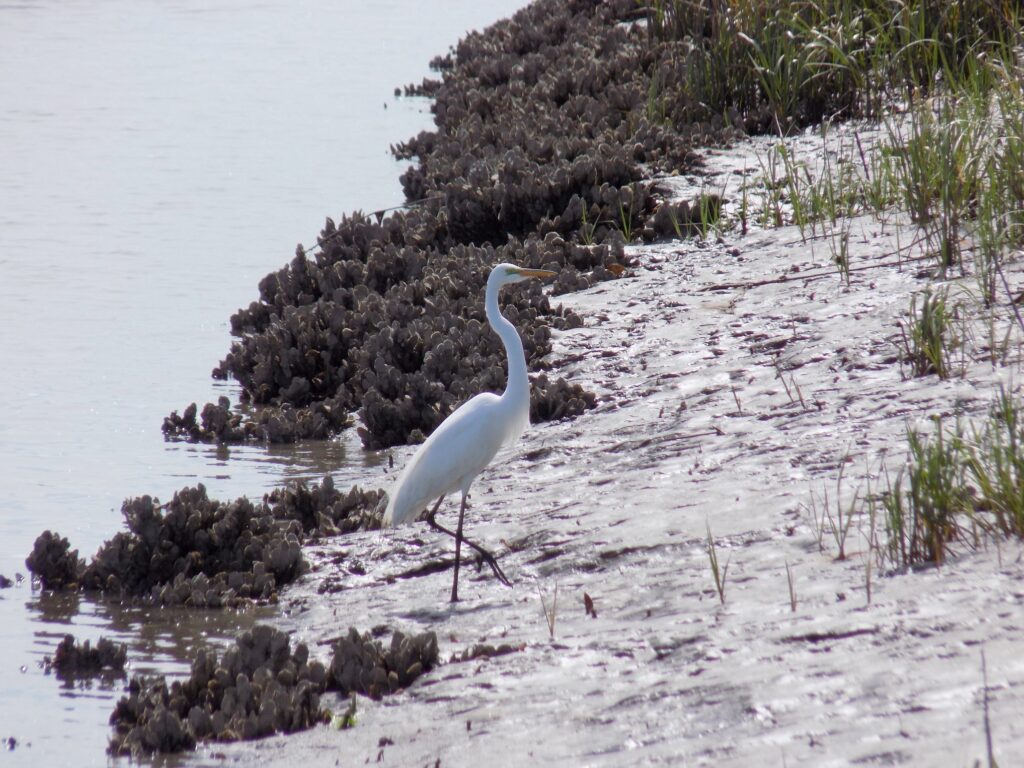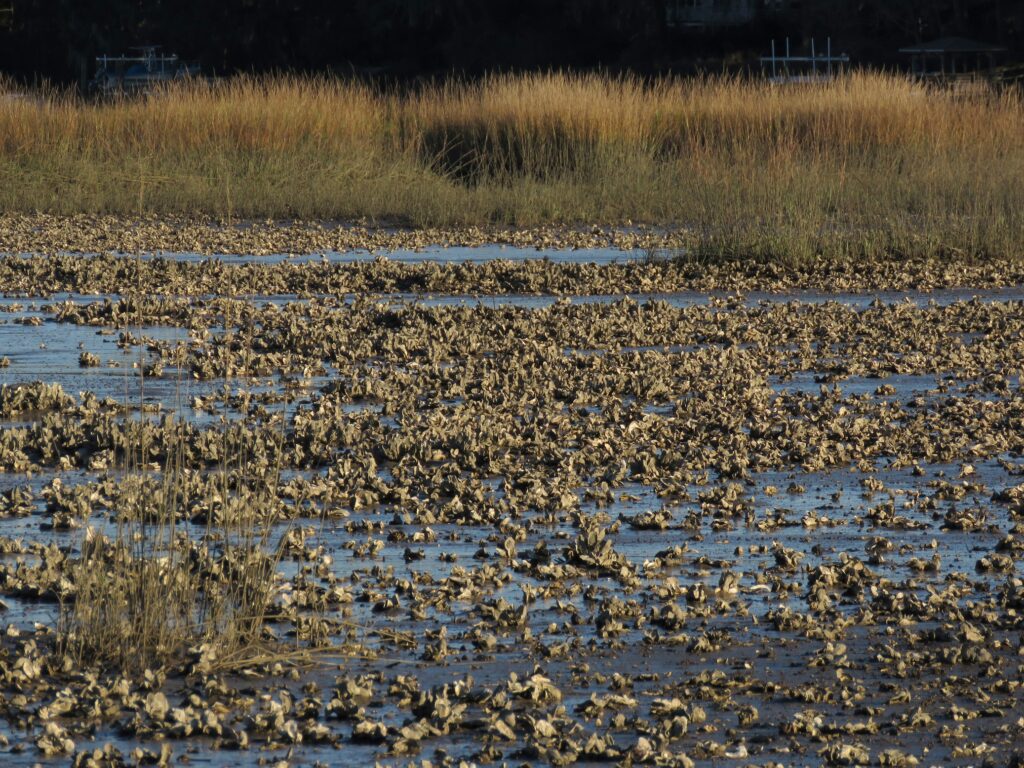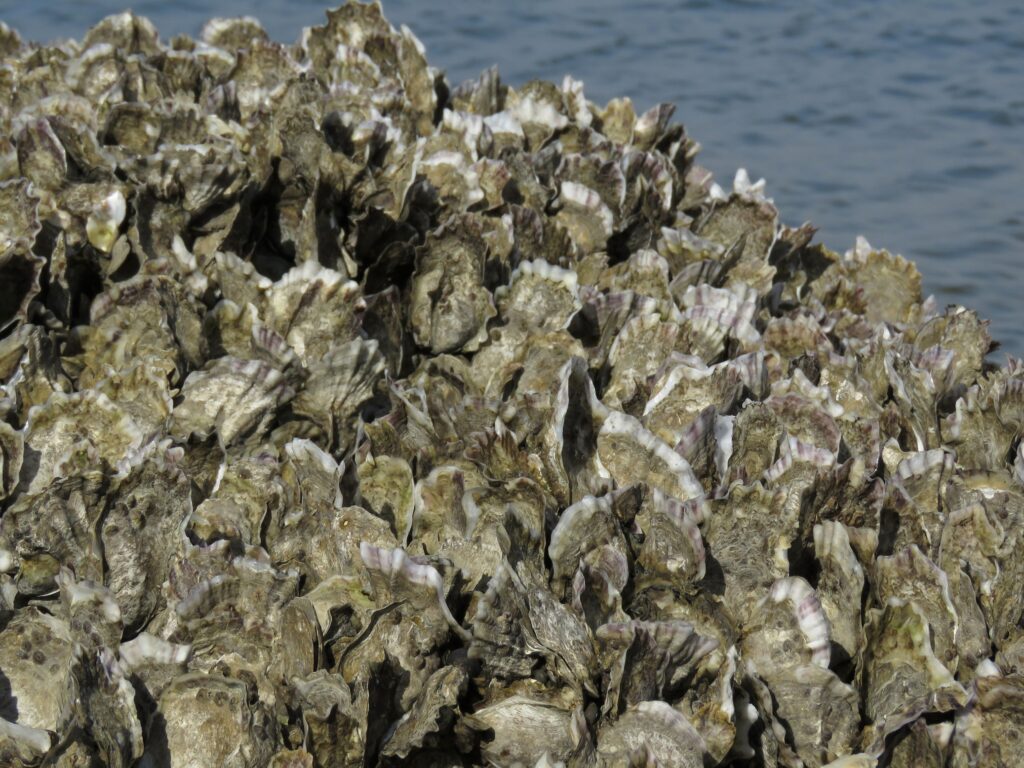



This week for Flora and Fauna Friday it’s everyone’s favorite bivalve, our snotty Lowcountry delicacy: the Eastern Oyster (Crassostrea virginica).
Our Eastern Oyster of the Lowcountry is a translucent, salty morsel sandwiched between two razor sharp shells of calcium-carbonate, one freely flapping and the other glued permanently into an amalgamated cluster of other Oysters. Our Oyster is found only in saline waters and is a bivalve just like a mussel or clam. Oysters are notable for their behavior of spitting at low tide. It’s a behavior that’s purpose is not well known but whose tune is trademark to our creeks; a melodious nasty habit of a dirty habitat. They attach to structures as free-swimming larvae and grow larger year after year, layer by layer. Overtime, more oysters cling to the oldest oysters as the community develops into a cluster. The cluster sheds and blossoms as it expands into a reef and eventually a bed in a larger system of beds that blanket the banks. These beds are centuries old and litter the shores of our rivers and creeks throughout the Lowcountry.
The Eastern Oyster is not just delicious, it’s an ecosystem engineer. A species of such utmost importance that its mere existence brings wealth and health to the environment surrounding it. Oysters are sessile. They swim through the water as larvae before attaching to a structure and staying put. The favorite thing for an Oyster larva to stick to is another Oyster. This makes good sense. Oysters can’t move so if it sticks to another Oyster, it’s probably someplace where an Oyster can live well enough. This tendency to self-adhere creates an oyster reef, a piling up and accumulation of decades of Oyster shells along the bank of a tidal river or creek. Spires of bleached shells tile and summit over each other above a foundation of pluff mud. These oyster reefs are critical habitat to many of our estuarine species. Stone Crabs, Mummichog, Terrapin, and an untold variety of fry nestle into this limestone mountain at high tide; its jagged peaks and deep ravines warding off the predators that encircle their retreat.
Oyster reefs not only nurture life on their shoulders but shape the very terrain around them. Oysters are filter feeders, they inhale surf filled with silt and plankton, strain it through their bodies, and exhale clean water. This filtration acts to do two things of great benefit to us. It removes potentially harmful bacteria from the water column, that the Oyster then eats, and sequesters sediment onto the Oyster reef. Oysters eat plankton, which is a catchall term for little critters that float in the water and can’t get around too good. This includes harmful bacteria, like fecal coliform, that we pollute our waterways with. However, Oysters don’t eat sand, silt, or most detritus. So they spit that out, where it falls into and behind the oyster reef. This serves to clear the water and build up the bank of the creek beneath and behind the oyster reef. This effect is strengthened by another passive effect of oyster reefs, wave-breaking. Oysters reefs are large, broad, vertically chaotic structures made of mortar that functionally act as a breakwater. Boat wakes and windblown waves crash and shatter against the oysters, scattering the sediment they carry behind the shells. Over time the bank builds up behind the oyster reef enough that the Smooth Cordgrass can send down its roots to stabilize it. The Oysters and Cordgrass work in tandem to close that gap and solidify the stream-edge against erosion.
This is why restoration and proper management of our oyster beds is critical to the health of our tidal creeks. Oysters clean the water of harmful contaminants that close our fisheries and restrict swimming. Their reefs buffer the pluff mud against boat wakes and storms, protecting and bolstering the Cordgrass that protects us from storm surge. Oysters need other oysters to establish and thrive. If we degrade our oyster beds with unsustainable harvesting and boat traffic, then that supply will evaporate in short order.